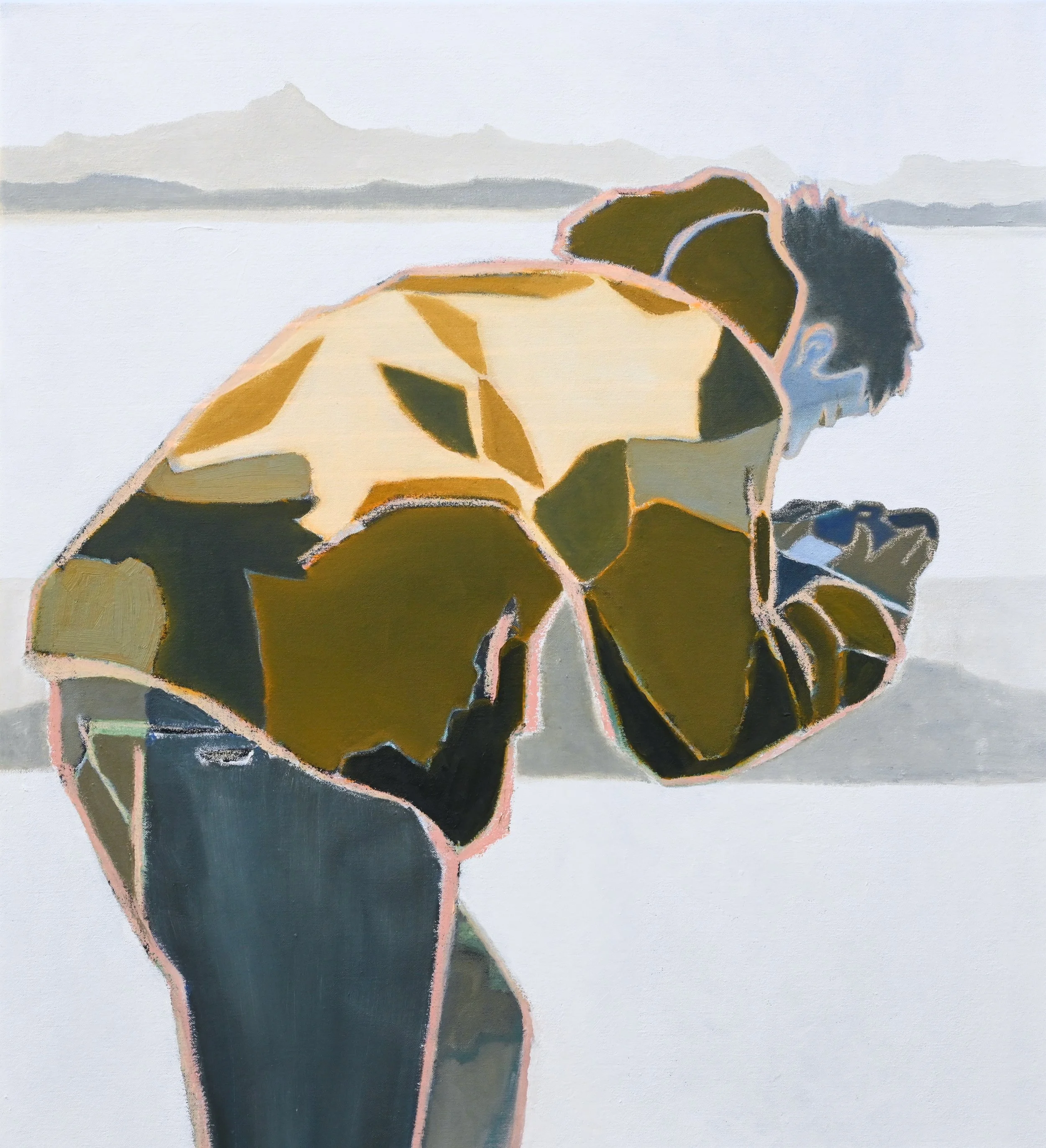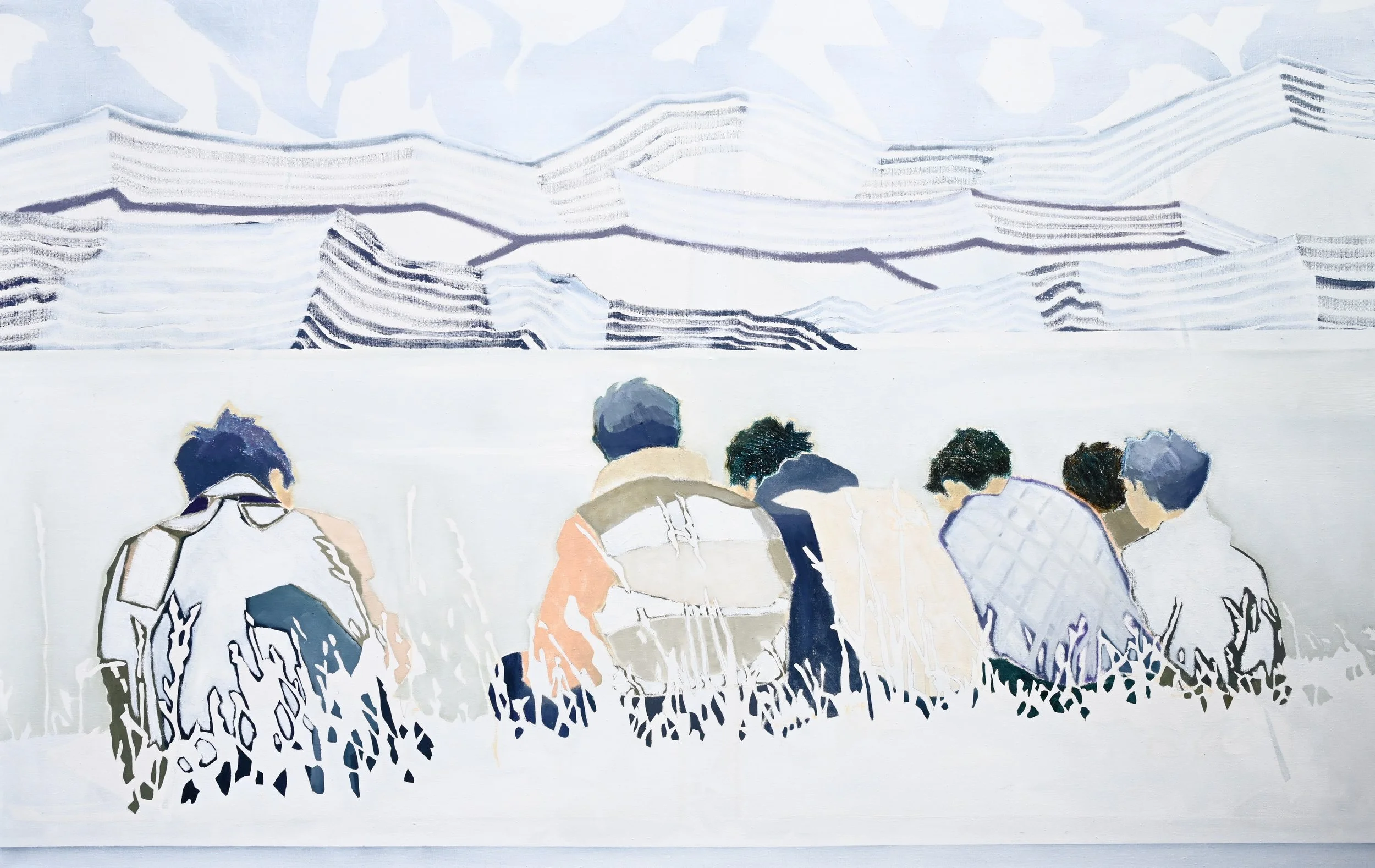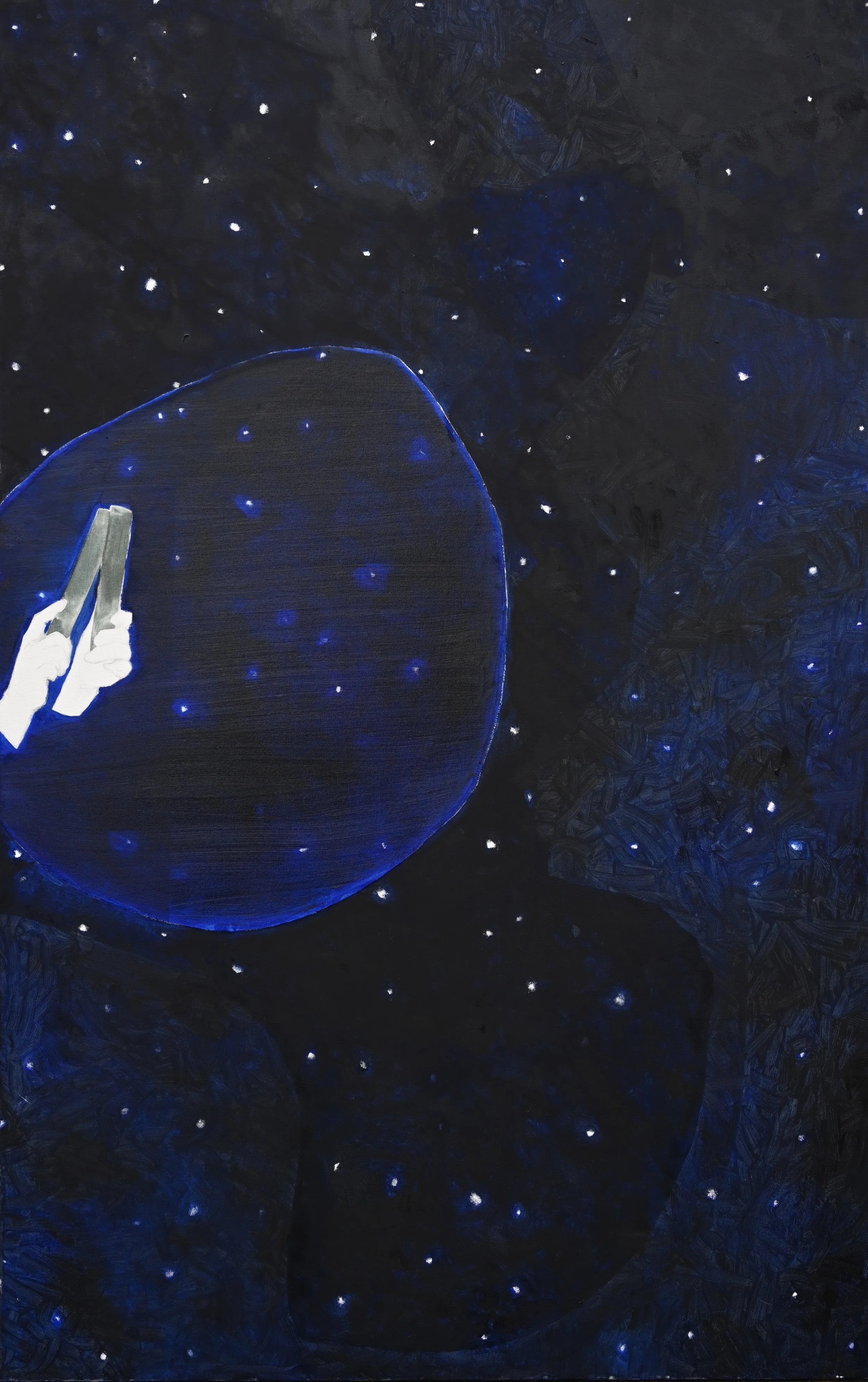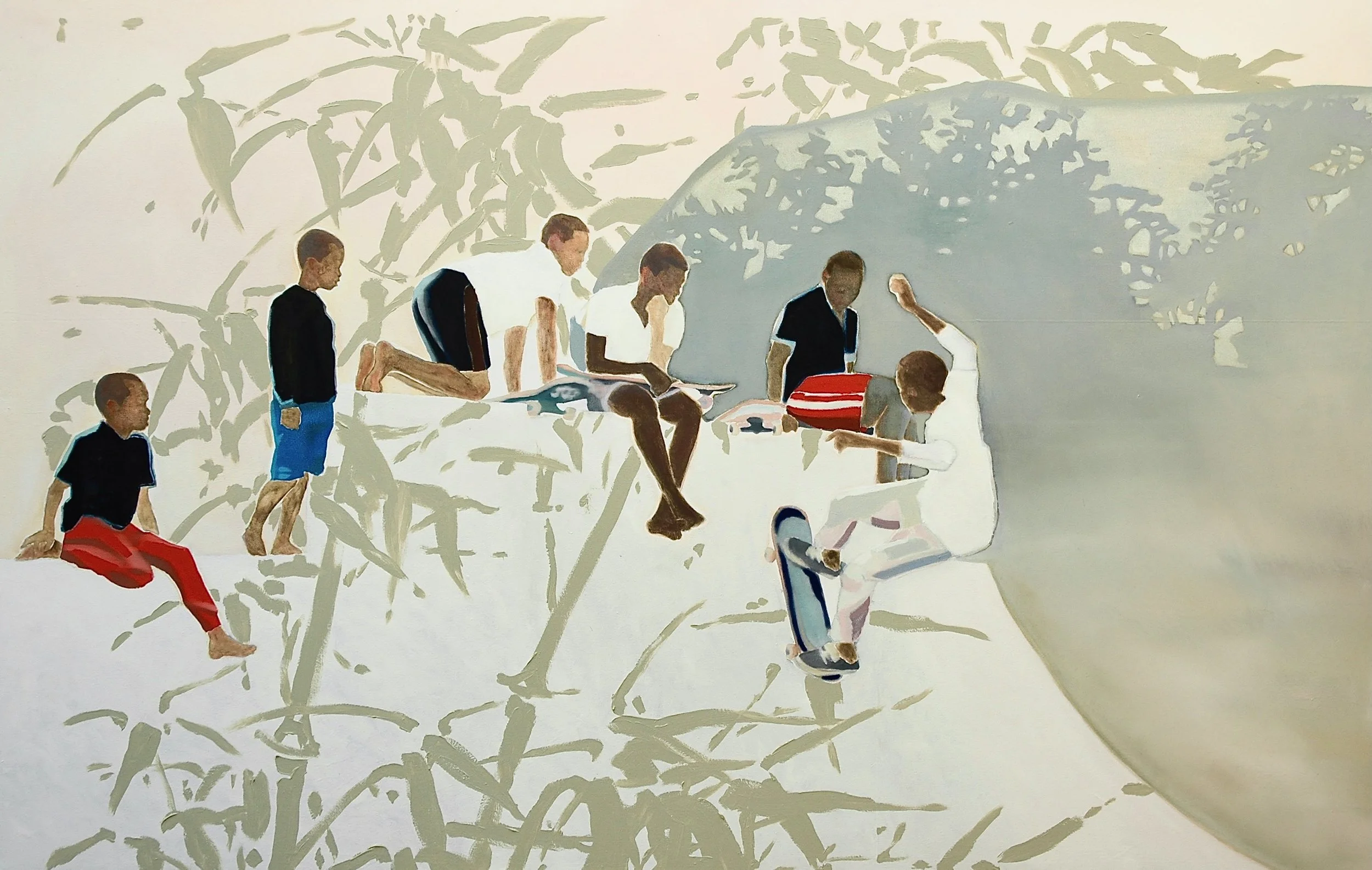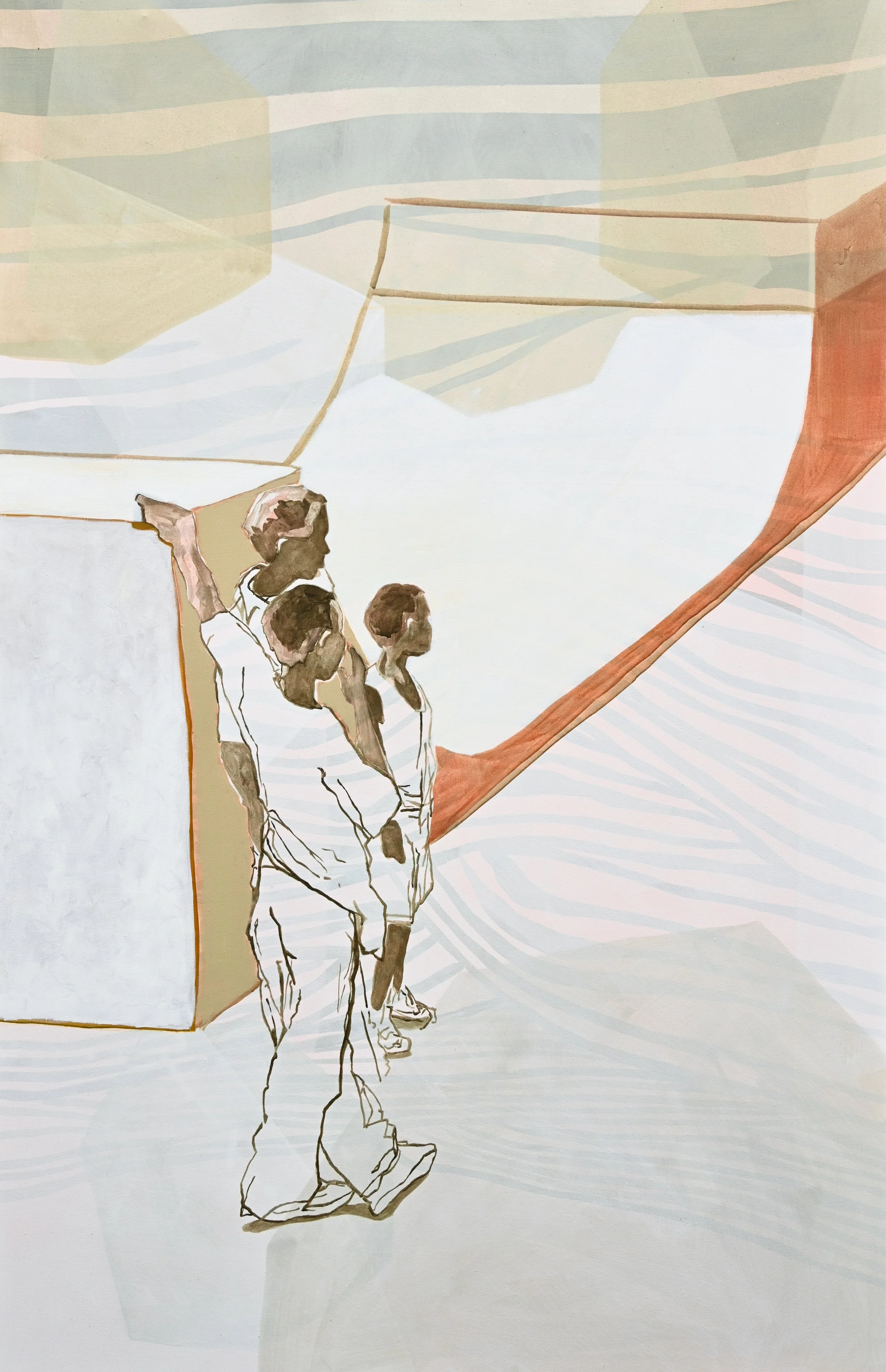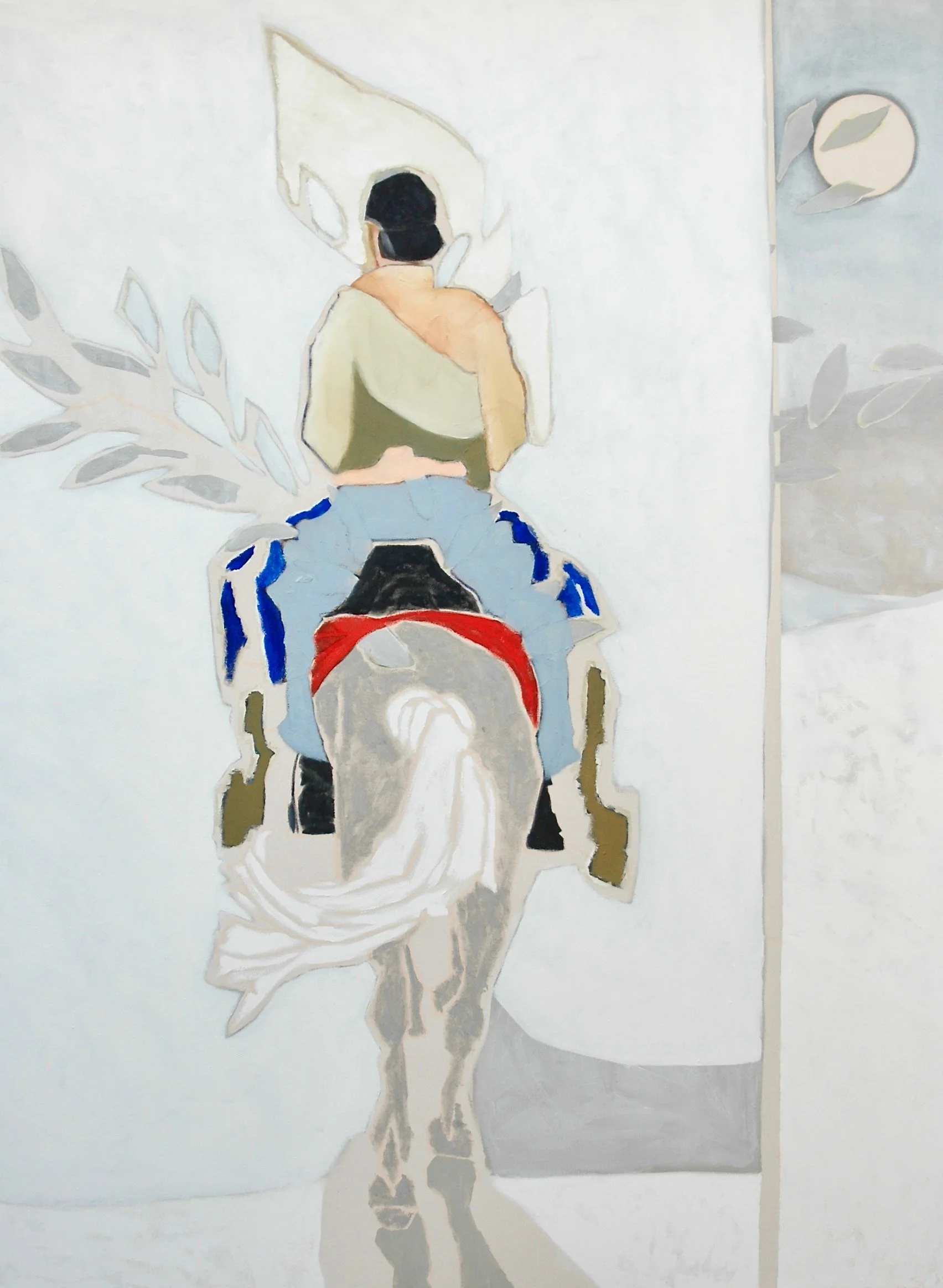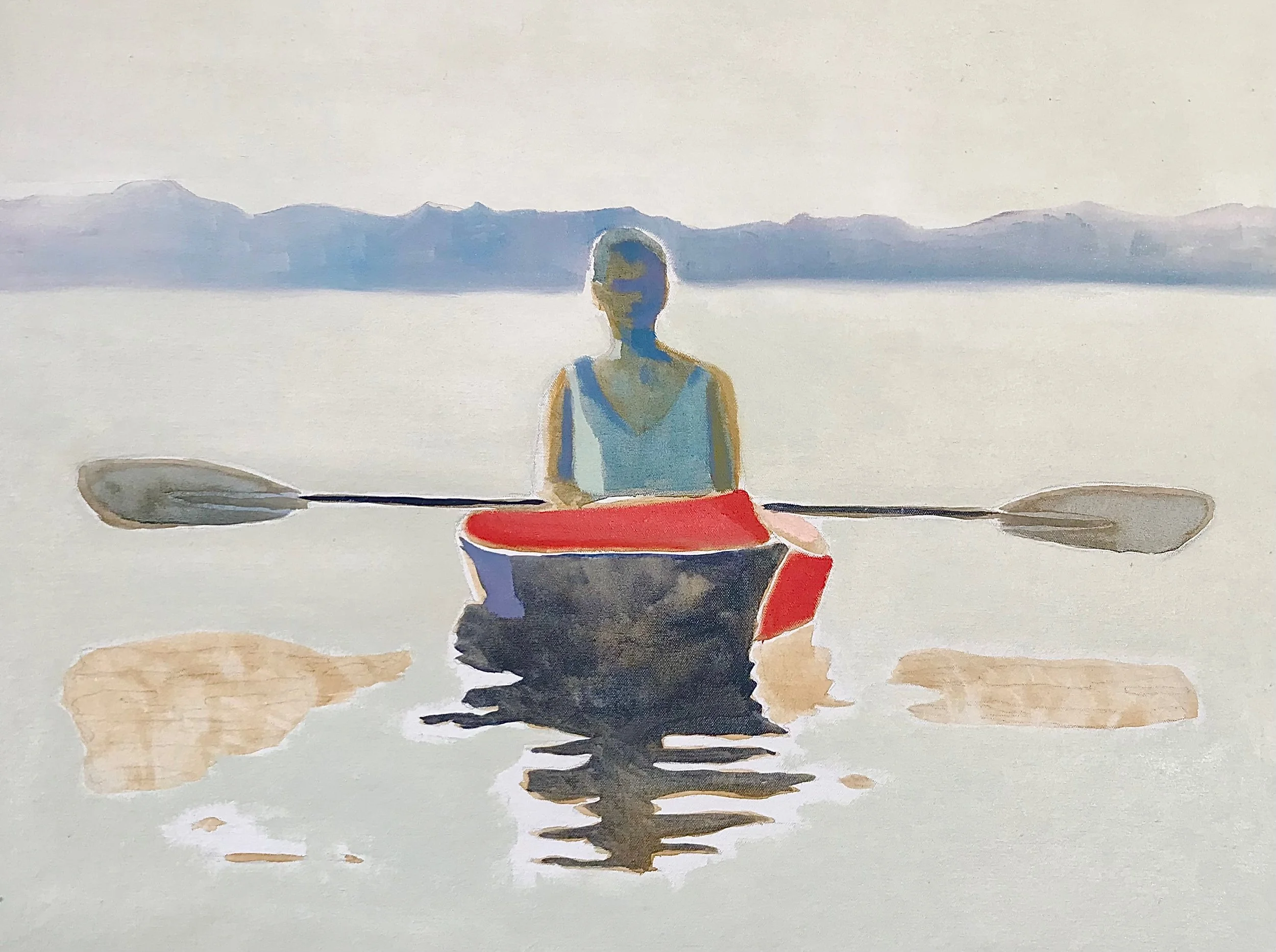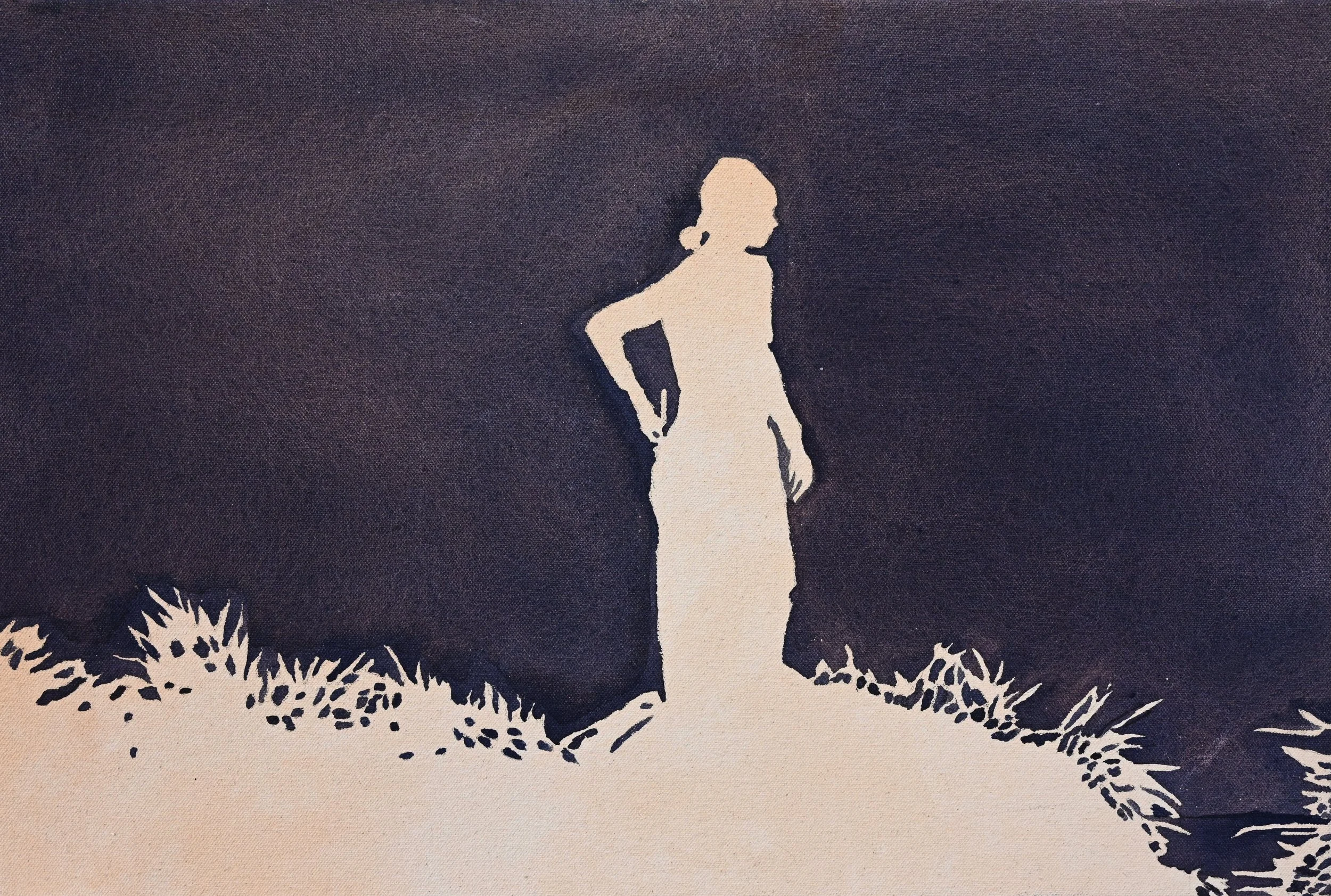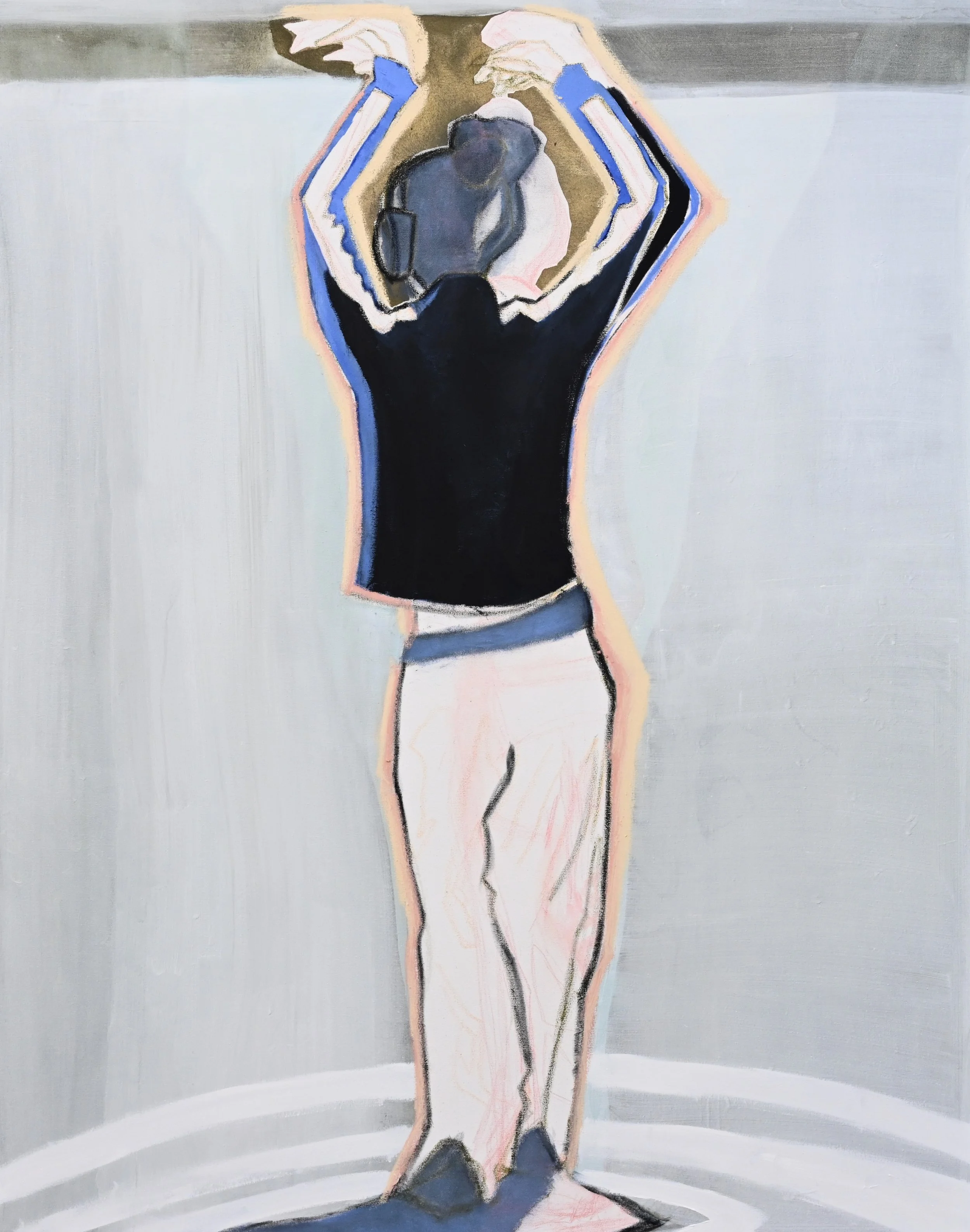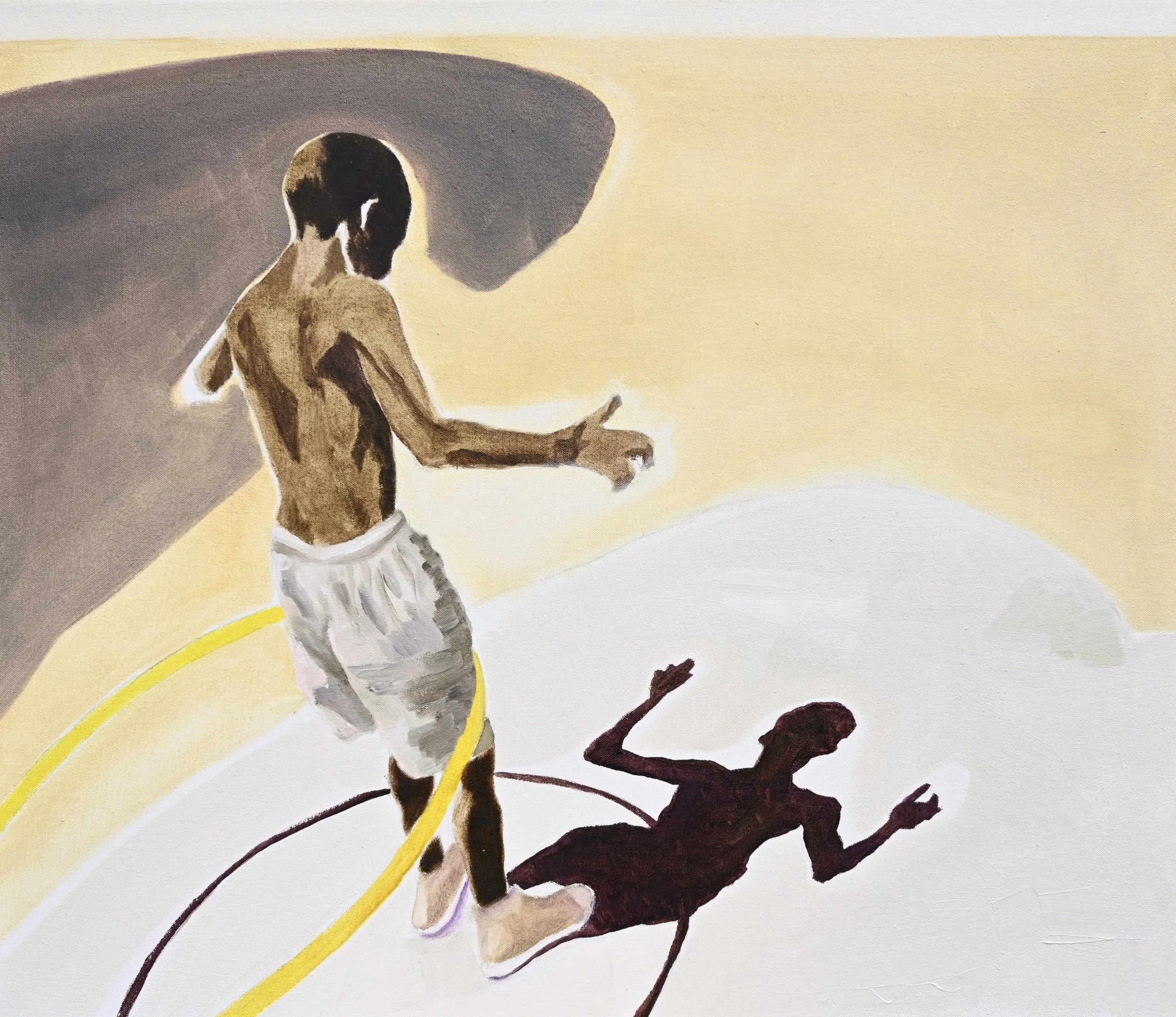Vivian Kahra
Freiburg, Germany
Website
viviankahra.com
Instagram
viviankahra
How would you describe your work?
My painting practice explores momentariness — the tension between impermanence and continuity. I’m interested in how fleeting experiences accumulate and shape our inner world - I call it ‘An architecture of memory’.
I consciously choose adolescents or scenes from the everyday life of young people as my subjects, because this stage of life uniquely embodies naturally lived momentariness.
Using floating compositions, reduced color palettes, multiple transparent layers of paint and fragmented forms I want to evoke a sense of movement. Figures often appear mid-experience — dissolving, shifting, momentary. My work reflects on the fragile beauty of presence and the quiet transformation of the visible into the remembered.
What inspires you?
Life.
I observe young people in moments when the perception of time slips away: skating, playing music, painting, or simply being in nature—they are fully present, if only for a brief moment.
These are moments without social media, moments of doing and being.
I, too, often find myself swimming, surfing, or wandering deep into the forest with my dog. These quiet places offer space for feeling and reflection.
Can you speak about your process?
Painting, for me, is like speaking with another soul. I approach it with reverence, eager to enter a shared dialogue. Unlike a conversation with a person, this exchange unfolds in silence—wordless, free from conscious thought. I move slowly, guided only by feeling, responding to what arises. In this space, creation and connection become one.
Each step in bringing a painting to life holds equal weight: from stretching the canvas taut over its frame, to the priming, the sketch, and the layers of color that follow—often beginning with translucent acrylics, then delicate glazes of oil, gradually becoming more opaque. The canvas breathes like skin. In slow, mindful strokes, I cloak it in color, intentionally leaving parts bare. To me, this speaks to the deeper themes of movement and impermanence.
How did you become interested in art?
I’ve always been the creative type—even as a little kid. I loved the idea of doing things my own way, taking an idea and figuring out how to bring it to life from start to finish. In high school, my art teacher wasn’t exactly inspiring (honestly, kind of boring), but that didn’t stop me from enjoying drawing and painting here and there.
After finishing high school, I went through a bit of a trial-and-error phase. I thought about a bunch of different careers, even tested a few out, but nothing really clicked. Every time it was a “no”—except when it came to art. That was the only thing that felt like a solid, definite “yes.”
Do you have any favorite artists, movies, books, or quotes?
Here is my mix-and-mach-list of some of my favourite artists: Peter Doig, Rineke Dijkstra, Fra Angelico, Luc Tuymans, Jeff Wall, Stefan Balkenhol, Tiepolo, Thomas Schütte, Elisabeth Peyton, Henry Taylor, Alice Neel, Caravagio, Agnes Martin, Cy Twombly, Per Kirkeby, Thomas Ruff, Richard Serra, Sol Lewitt, Hugo Rondinione, Paul Klee, Picasso, Cecily Brown, Pontormo……
I like romantic movies like “The Fabulous Destiny of Amélie Poulain”, (France, 2001) or “The Big Blue”, (France, 1988) but also the Dogma- movies f.e. “The Celebration” (Festen, Danish,1997)
One of my favourite books: “Smilla’s sense of snow” by Peter Hoeg
Quote: "He who can no longer pause to wonder and stand rapt in awe, is as good as dead; his eyes are closed.” (Albert Einstein)
What advice do you have for younger artists?
Look right in front of your feet and keep creating—step by step. Stay true to your own voice, keep making things, and don’t fear failure. Reach into the art world at your own pace. Today, there are countless opportunities - choose the ones that truly fit you.




